- TOP
- Stories
- Exploring the Future Five Years from Now: Will the Green Growth Strategy Lead to Promising Business Opportunities?
- Business Solution
- ESG
Exploring the Future Five Years from Now: Will the Green Growth Strategy Lead to Promising Business Opportunities?
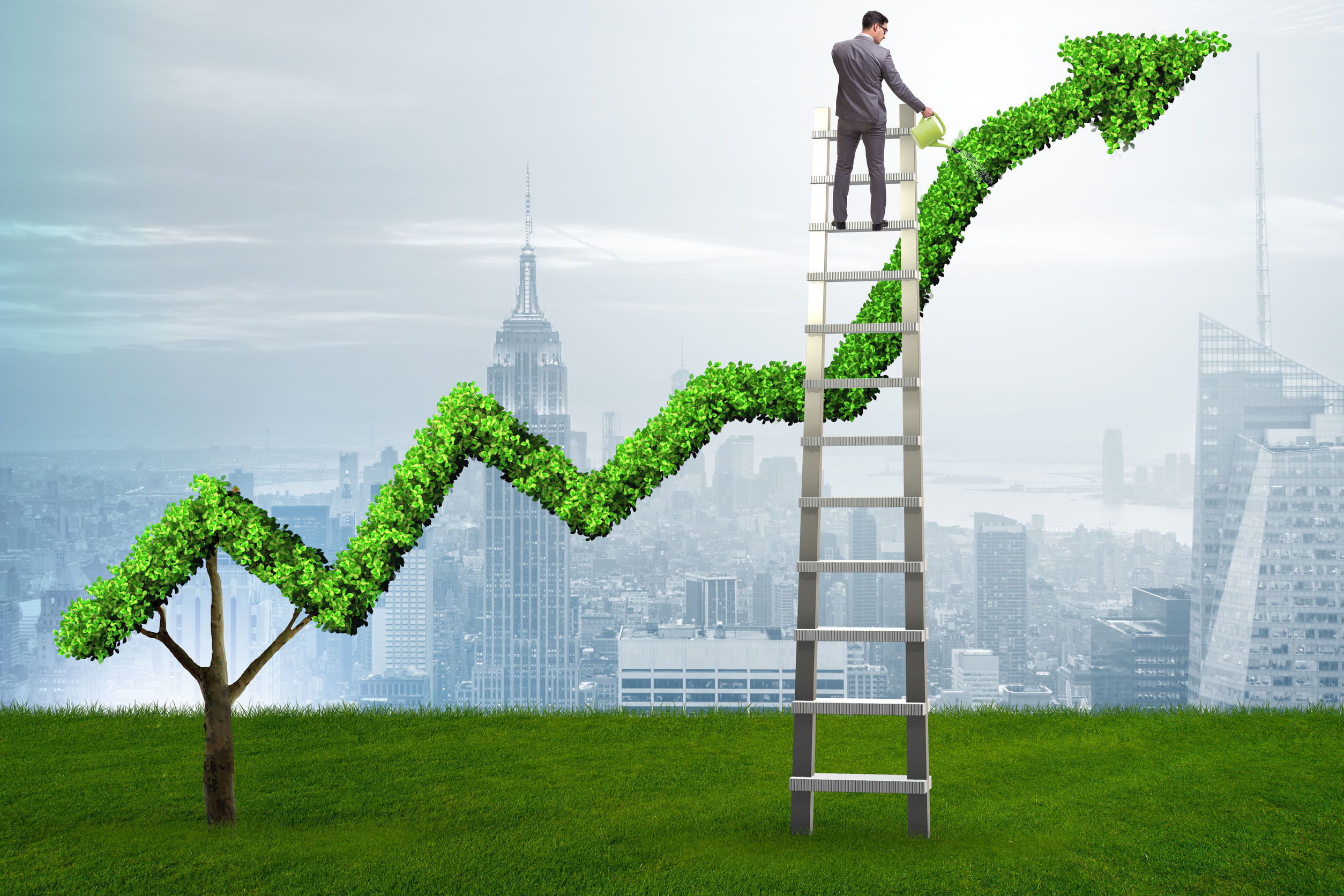
The COVID-19 pandemic has brought about great changes in our society and business environment. To grasp the nature of the social transformation arising from this ongoing event, since May 2020 Nikkei BP has been conducting a series of surveys of Japanese businesspeople (more than 11,000 in total). The results unveil major alterations in their mindsets.
Following the Japanese government's declaration on realizing "Carbon Neutrality by 2050" in October 2020, the Ministry of Economy, Trade and Industry (METI) took the lead in formulating the "Green Growth Strategy through Achieving Carbon Neutrality in 2050," which was unveiled in December of the same year. The Ministry positions this strategy as "an industrial policy to lead the challenging goal of achieving carbon neutrality by 2050, a vision that is upheld by the Suga administration and aims toward a positive cycle of economic growth and the environmental protection." The strategy emphasizes 14 sectors as priority fields (Fig. 1). These are considered essential for nationwide efforts from the perspective of high growth potential and greenhouse gas emission reduction effects. In this article, we look back on the results of our survey, which asked corporate managers and executives of various fields about their awareness of and expectations for the Green Growth Strategy.
| 1 | Offshore wind power: Wind turbines, parts, floating wind turbines |
| 2 | Fuel ammonia: Combustion burners (for fuel in the transition period to a hydrogen-powered society) |
| 3 | Hydrogen: Turbines for power generation, hydrogen reduction steelmaking, carrier ships, water electrolyzers |
| 4 | Nuclear power: SMRs (Small Modular Reactors), nuclear power for hydrogen production |
| 5 | Mobility and storage batteries: EVs (electric vehicles), FCVs (fuel cell vehicles), next generation batteries |
| 6 | Semiconductors and ICT: Data centers, energy-saving semiconductors (demand-side efficiency) |
| 7 | Maritime: Fuel-cell ships, electric propulsion ships, gas-fueled ships (hydrogen, ammonia, etc.) |
| 8 | Logistics, people flow and infrastructure: Smart transportation, drones for logistics, fuel-cell construction machinery |
| 9 | Food, agriculture, forestry and fisheries: Smart agriculture, wooden skyscrapers, blue carbon |
| 10 | Aviation: Hybrid electric, hydrogen-powered aircraft |
| 11 | Carbon Recycling: Concrete, biofuel, plastic materials |
| 12 | Housing and building: Next generation PV (perovskite solar cells) |
| 13 | Resource circulation: Biomaterials, recycled materials, waste power generation |
| 14 | Lifestyle-related industry: Local decarbonization business |
Figure 1: The 14 priority fields of Green Growth Strategy
The survey was conducted from January 21 to February 2, 2021, approximately one month after the publication of the Green Growth Strategy by METI. It was an effort to clarify the degree to which the respondents knew about the Strategy. Of the business professionals who answered that they "know or have heard of" the declaration on Carbon Neutrality by 2050 proposed by the Suga administration, 57.8% responded that they "know in detail" or "know the outline" of the Green Growth Strategy (Fig. 2). According to the survey results, some 40% still had little knowledge about the Strategy.
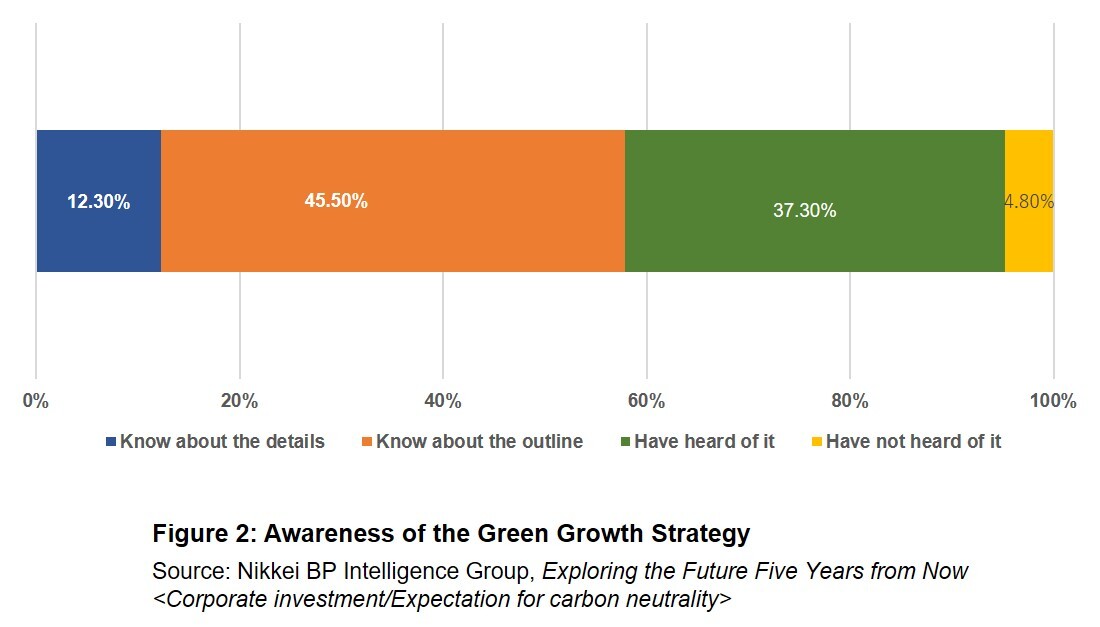
The survey also asked the respondents who knew about the details or the outline of the Green Growth Strategy if they though that the strategy would lead to the revitalization of domestic industries (Fig. 3). Those who saw negative prospects for the revitalization of domestic industries (i.e., who replied "No" or "Probably not") accounted for less than 10%. Some 70% of the respondents had a positive view that the Strategy would lead to industrial revitalization. According to METI, the Strategy is expected to have beneficial annual economic effects amounting to 90 trillion yen in 2030 and 190 trillion yen in 2050. Many of the business professionals who answered to the survey also seemed to have high expectations for the positive effects of the Strategy.
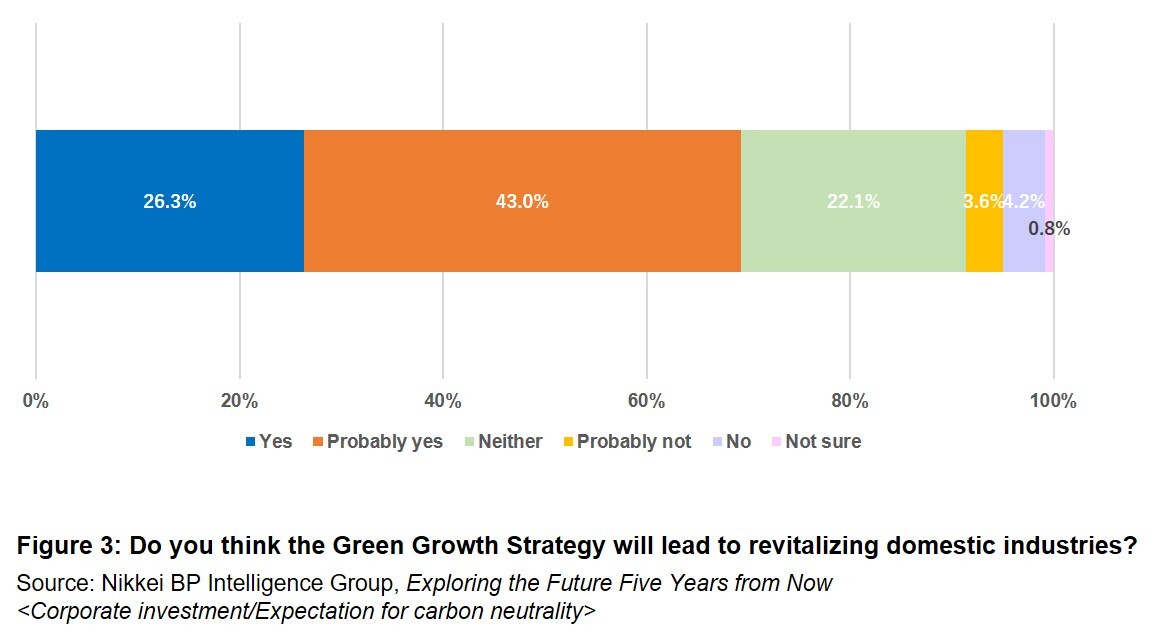
The 14 priority fields delineate where action plans are formulated in the Green Growth Strategy. Asked about which of them were related to the respondents' business areas, over 20% of the respondents had connections with five priority fields (Fig. 4). Of these fields, "Mobility/storage batteries: EV/FCV/next-generation batteries" accounted for more than 30%.
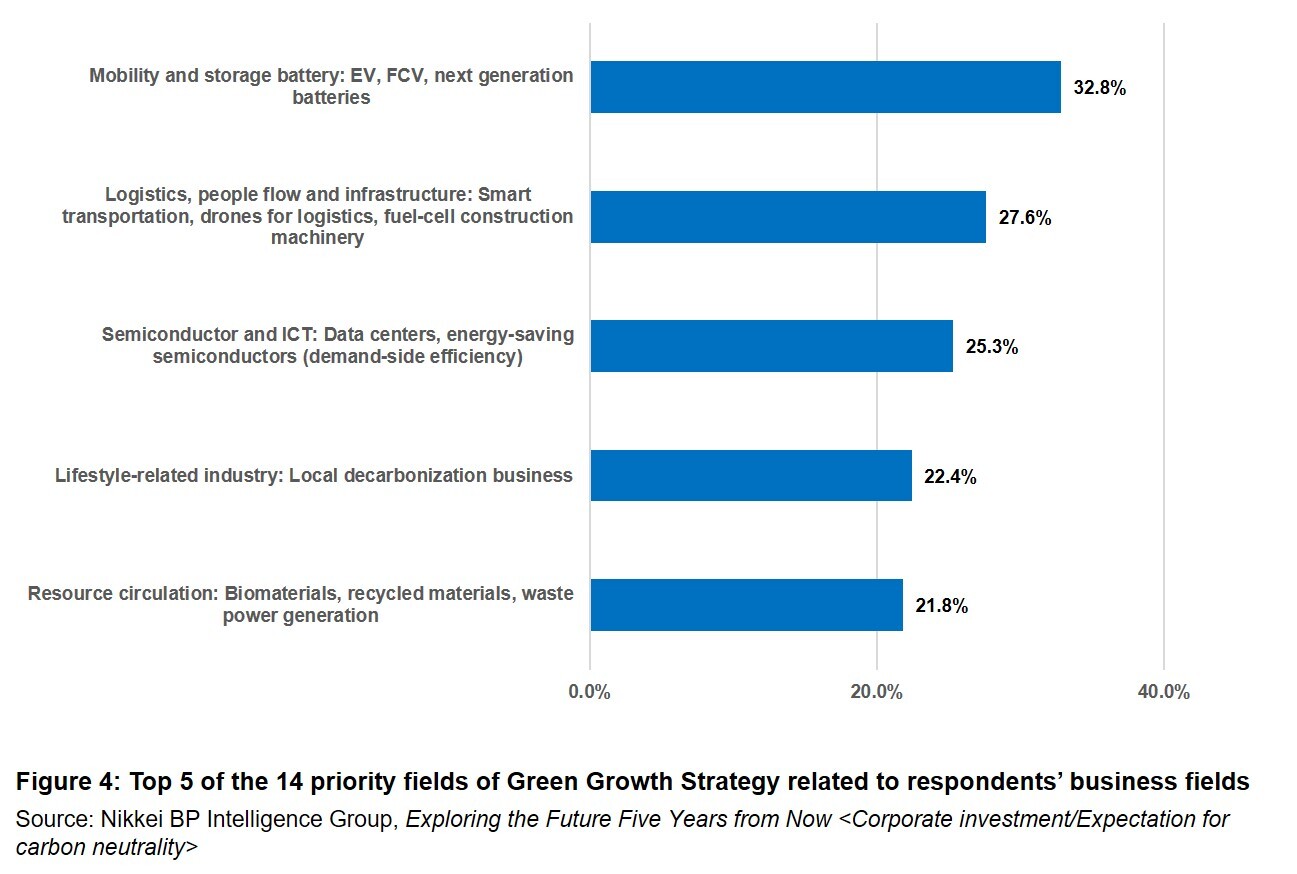
To those who answered that any of the priority fields of Green Growth Strategy were related to their business areas, the survey asked if they thought that the related field(s) would result in promising business for their companies within the next five years (Fig. 5). According to the results, 63.2% expected the related priority field(s) would indeed give rise to positive business developments. Many of the respondents who had high expectations answered: "It will lead to the expansion of new business opportunities" and "It is a globally rising field and demand will increase." On the other hand, many voices pointed out a lack of necessary resources, such as personnel for developing such fields into new business. In the government materials explaining the Green Growth Strategy, METI states that it is the role of the government to "provide full-fledged support for positive challenges of private companies." In the years ahead, the government's ability to draw out practical and effective measures that will be attractive for private companies is likely to be the key to creating promising businesses.
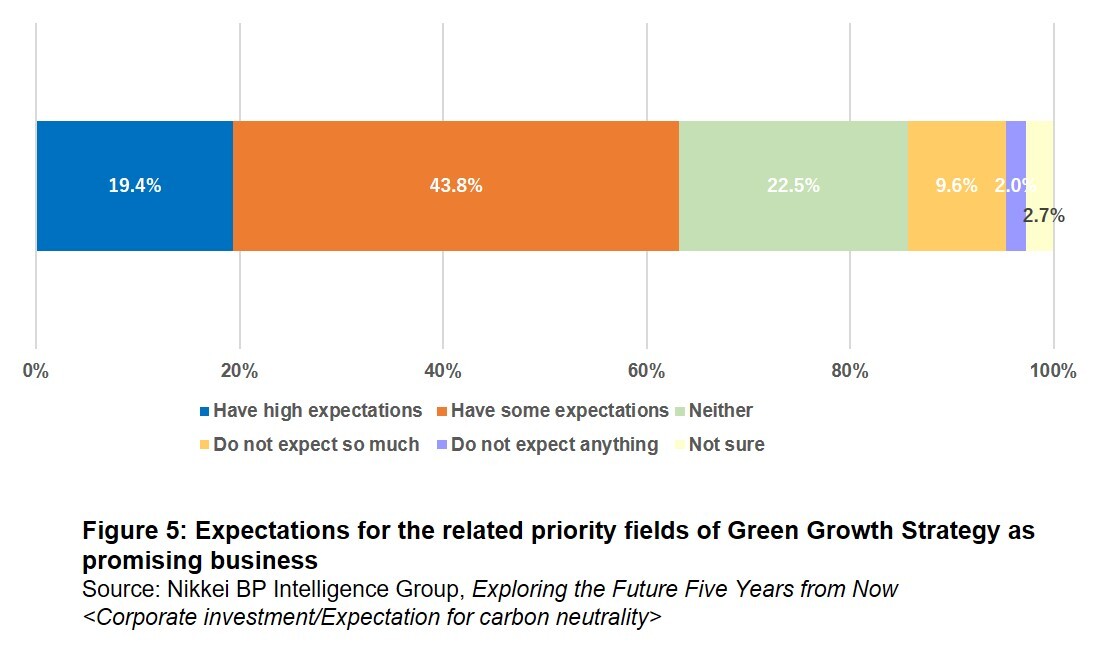
This report was compiled by Tomoko Ueno, Future Business Research Team, Nikkei BP Intelligence Group.
For further details, please contact:
Nikkei Business Publications, Inc.
https://www.nikkeibp.co.jp/english/
NIKKEI BP

"Foresee the future, Unlock the insight" is the expression that describes our mission. As Japan's leading BtoB media service, we meet diverse business community needs in the three key categories of "management," "technology" and "lifestyle."
See More
